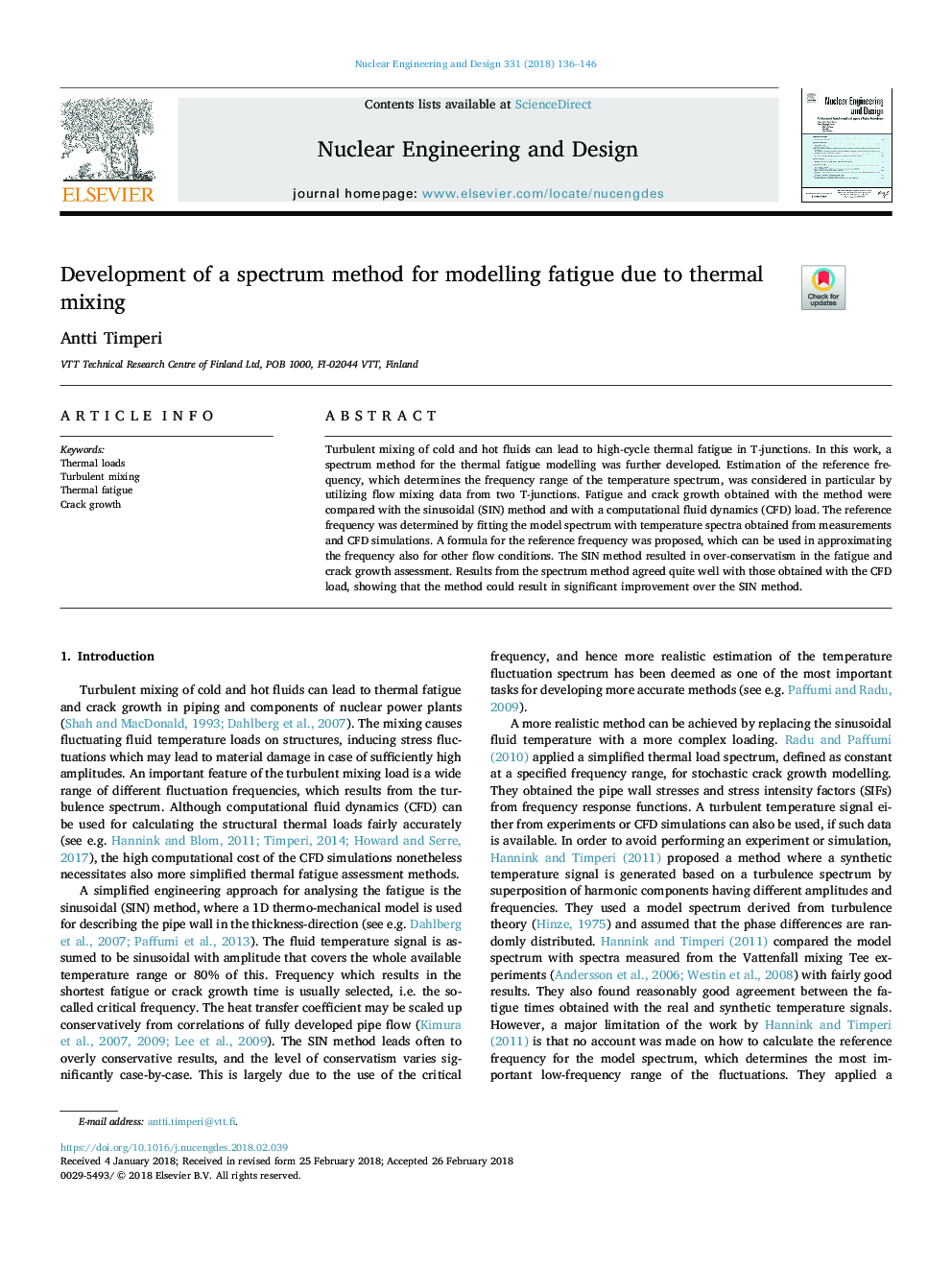| Article ID | Journal | Published Year | Pages | File Type |
|---|---|---|---|---|
| 6758868 | Nuclear Engineering and Design | 2018 | 11 Pages |
Abstract
Turbulent mixing of cold and hot fluids can lead to high-cycle thermal fatigue in T-junctions. In this work, a spectrum method for the thermal fatigue modelling was further developed. Estimation of the reference frequency, which determines the frequency range of the temperature spectrum, was considered in particular by utilizing flow mixing data from two T-junctions. Fatigue and crack growth obtained with the method were compared with the sinusoidal (SIN) method and with a computational fluid dynamics (CFD) load. The reference frequency was determined by fitting the model spectrum with temperature spectra obtained from measurements and CFD simulations. A formula for the reference frequency was proposed, which can be used in approximating the frequency also for other flow conditions. The SIN method resulted in over-conservatism in the fatigue and crack growth assessment. Results from the spectrum method agreed quite well with those obtained with the CFD load, showing that the method could result in significant improvement over the SIN method.
Related Topics
Physical Sciences and Engineering
Energy
Energy Engineering and Power Technology
Authors
Antti Timperi,
